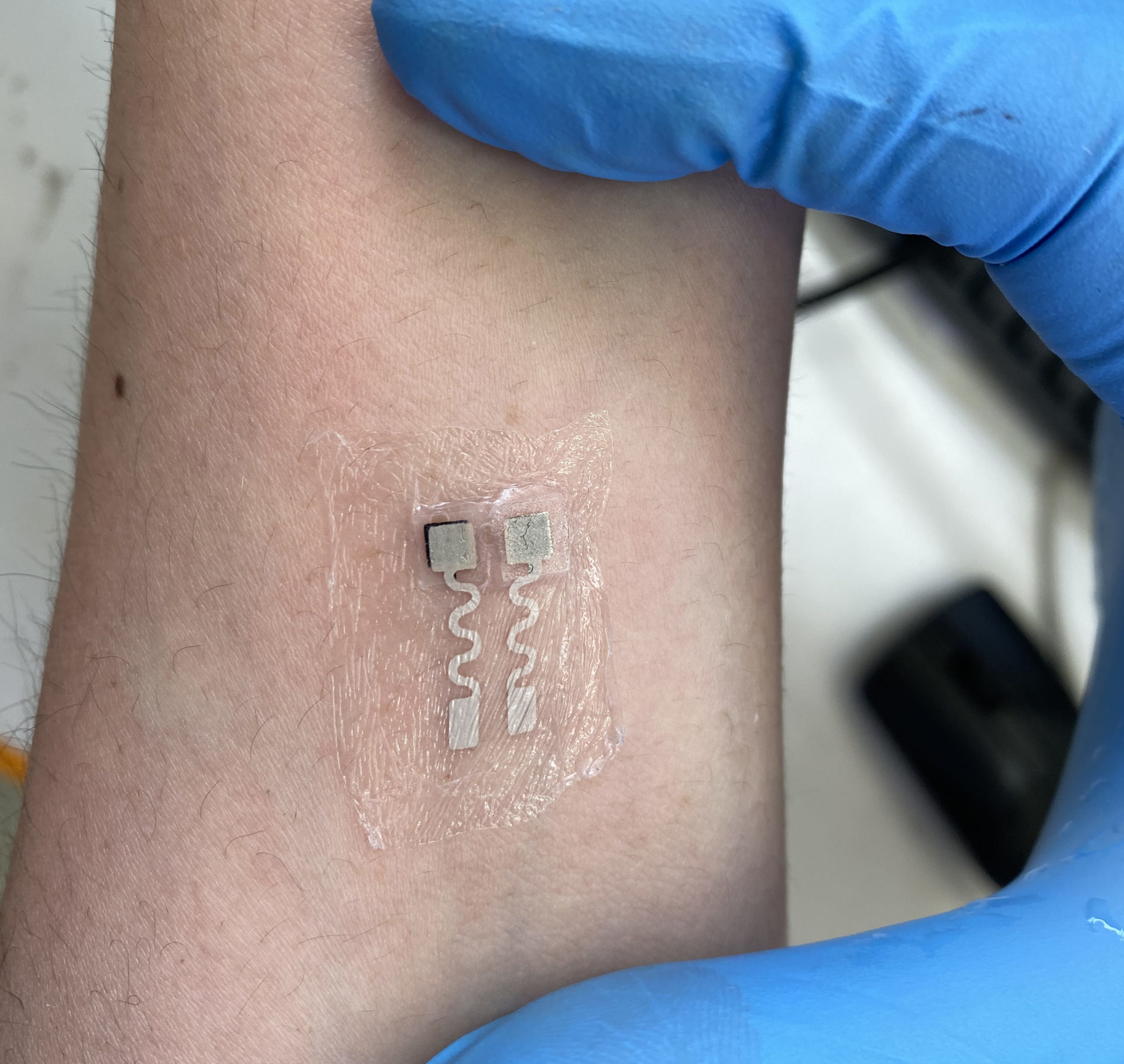
Israel

Israeli TB patch could save millions
With COVID-19 on our minds, it’s easy to forget that tuberculosis (TB) is an epidemic that takes South African lives every day. Now, a tiny patch developed by Israeli scientists could make a big difference in getting TB under control, even eradicating it.
A research team from the Technion-Israel Institute of Technology says it has produced and tested a patch that gives a diagnosis an hour after it’s attached to the skin. It will reduce the number of people who die from the disease due to a lack of diagnosis, and could help the world eradicate it altogether, the team says.
Not only that, it conducted much of its research in South Africa, where TB is the leading cause of death. About 89 000 people die from it every year – that’s 10 every hour.
The project’s scientific leader, Dr Rotem Vishinkin, told the SA Jewish Report that the patch was evaluated in collaboration with Groote Schuur Hospital in Cape Town. “This collaboration wasn’t new – we had a previous mutual study in the past. Therefore, it was a natural choice to continue this collaboration with the TB patch. In a later stage, the study expanded to India and Latvia,” Vishinkin says.
TB is easily transmitted by sneezing, spitting, and coughing. Each infected person passes it to more than 10 people on average. About one-third of the world population is estimated to be infected with TB bacteria.
In spite of being a preventable and curable disease, the World Health Organization (WHO) has considered TB a global health emergency since 1993. It regards a fast, cheap, and efficient TB test to be crucial to fighting the disease.
It’s this need that Professor Hossam Haick and his team from the Wolfson Department of Chemical Engineering at the Technion address in their groundbreaking study. Led by Vishinkin, the group created a sticker patch to be applied to the patient’s arm. Containing a pouch of absorbent material, the patch collects compounds released through the skin. It then uses artificial intelligence and essentially “smells” the skin to detect TB. Haick is a pioneer of disease detection using smell.
“The patch contains sensors made from nanoparticles. What we’re doing is sensing changes in the smell pattern of the person, which can tell us with high accuracy whether or not they have TB,” Vishinkin says. The patch changes colour as it gives a diagnosis. If it turns red, the person is infected. If it turns green, they aren’t.
In the current model, a computer is needed to provide results, but the final product will automatically transmit results to a cell phone or clinic. More testing is taking place, and they hope to get the product on the market within a few years.
In addition, it will be cheap, fast, and simple to use, requiring no specially trained personnel. The group hopes the same methodology can be used to diagnose other diseases and conditions in future.
“The collaboration [with South Africa] was amazing and the engagement of health workers and volunteers was a great success,” Vishinkin says. “We had several training sessions and visits at local clinics prior to starting the actual volunteer recruitment.”
A recent survey shows that South Africa has a far higher number of people with TB than previously thought. The survey was conducted between 2017 and 2019 by the South African Medical Research Council, Human Sciences Research Council, and the National Institute for Communicable Diseases on behalf of the health department.
About three million cases of TB go undiagnosed annually, which results in 1.4 million deaths every year. Many people die because early symptoms are non-specific, which complicates the diagnosis. What makes matters worse is that existing diagnosis methods are slow and at times too expensive or complicated in rural or underdeveloped areas.
Asked what impact the patch could have on the TB epidemic in South Africa, Vishinkin says as a triage test that can be performed outside clinics at community-based levels and remote areas, it will “assist in lowering the burden on TB clinics and refer only those who get a possible result based on the patch test. Additionally, due to its low cost, it will allow for fast triaging, without the active involvement of the subject to produce a sputum sample or blood sample.”
They hope the patch will “lower the burden on health systems, provide instant results, and reduce further spread of disease and morbidity. In future, the patch will be efficient in detecting disease even before the appearance of physical symptoms.”
The study was supported by the Bill & Melinda Gates Foundation, Vishinkin says, because “the urgent need for a triage test, defined by the WHO, encourages thinking out of the box as the solution. It must be not based on a sputum sample, and must be easy to use, rapid, and cost-effective. Our suggested approach answers these requirements, and has a great potential to mature into a technological tool used in practice.”





Inge Beadle
August 21, 2021 at 10:22 pm
And you worry about Covid deaths?
That is a virus where 98% of ‘healthy’ people recover from- the ‘killing’ percentage is very low-
and we totally forget that TB kills more than Covid ??? And how about the thousands of Malaria deaths?
And TB is treatable- much better than Covid- unless we can finally get doctors to admit that a prophylactic
system is possible (AND treatment) with Ivermectin?
Far better than Intubation with Oxygen when its too late.